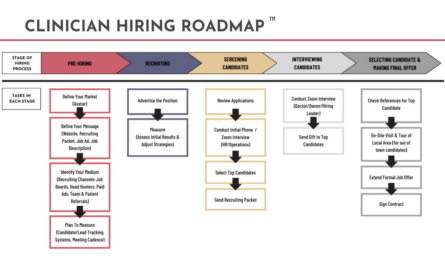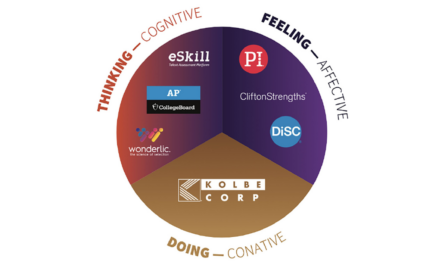Uniformity, efficiency, productivity and competence
By Katherine Schrubbe, RDH, BS, M.Ed, PhD
The military, business and medical literature is filled with information on the creation and utilization of Standard Operating Procedures (SOPs). Designed to create uniformity, efficiency, productivity and competence in the workplace, SOPs are crucial to infection prevention. According to the U.S. Army, an SOP is “a clearly written set of instructions for methods detailing the procedures for carrying out a routine or recurring task or study.”1 In the business world, an SOP may be described as “a step by step guide on how an employee’s work process should run providing detailed guides or guidelines for an employee.”2 In medicine, SOPs can be defined as “a specific set of practices that are required to be initiated and followed when specific circumstances arise. For example, emergency room physicians have SOPs for patients who are brought in an unconscious state; nurses in an operating theater have SOPs for the forceps and swabs they hand to surgeons; and laboratory technicians have SOPs for handling, testing, and subsequently discarding body fluids obtained from patients.”3
SOPs are critical to infection control and prevention in dentistry as well. They create a foundation for team training and effective, site-specific procedures, which have a positive impact on the safety of dental team members and patients.
Where to begin?
The Occupational Safety and Health Administration (OSHA) states that each practice must have an individual designated as the safety manager, while the Centers for Disease Control and Prevention (CDC) states that one person in the dental practice who is trained in infection prevention be designated as the infection prevention coordinator.4,5,6 In some cases, this is the same individual, but not always, as the roles outline varying responsibilities. For the purposes of this article, the focus will be on the role of the Infection Prevention Coordinator, also referred to as the Infection Control Coordinator (ICC).
According to the CDC, one duty of
the ICC is to develop written infection prevention policies and procedures
based on evidence-based guidelines, regulations
or standards – in other words, infection prevention SOPs. The CDC goes on to
say that these policies and procedures should be tailored to the dental setting
and reassessed annually.6 An example of this could be an SOP
for operatory cleaning and
disinfection. This SOP creates a standard process in the specific practice for
all team members and leaves no room for question around how to achieve
compliance. The job of the ICC is
extremely important to the practice and should be delegated to a team member
who is truly willing to be committed to the position. The dentist or management
team should really assess their team to determine who is best suited and will be dedicated to the ICC position. The ICC is
also responsible for providing supplies necessary for adherence to Standard
Precautions (e.g., hand hygiene products, safer devices to reduce percutaneous
injuries, personal protective equipment).6
In a recent article by Eklund, she cites the Organization for Safety Asepsis and Prevention (OSAP) sample job description for the ICC, which includes a number of tasks, including:
- Review existing policies and SOPs to identify gaps and outdated information.
- Act as a resource for dental team personnel.
- Maintain relevant documentation, including records, permits and licenses.
- Provide infection prevention education and training for new and existing personnel.
- Monitor compliance with written policies and procedures through observation, checklists and other evaluation methods.7
The role of the ICC is to manage and provide oversight of the infection control program in the dental practice. Although this team member is the key person for infection control, it is vital for the doctor/employer to promote a culture of safety and support the efforts of the ICC so the entire team is focused on infection prevention, a safe workplace and compliance to set SOPs.
Resources for the ICC
Almost any team member who has been designated as the practice ICC will say it is not an easy job. Whether new to the position or not, it may be overwhelming to review the assigned tasks for infection control and determine where and how to find resources. Fortunately, there is no need to try and re-invent the wheel, as there are some key organizations that can assist in developing written SOPs for the practice.
The Organization for Safety, Asepsis and Prevention (OSAP)
- OSAP’s mission is to be the world’s leading provider of education that supports safe dental visits. The organization focuses both on strategies to improve compliance with safe practices and on building a strong network of recognized infection control experts. OSAP offers an extensive online collection of resources, publications, FAQs, checklists and toolkits to help dental professionals deliver the safest dental visit possible for their patients.8 The toolkits and checklists are current and science-based and can be used to form the foundation of the practice’s infection control SOPs.
CDC
- The Summary of Infection Prevention Practices in Dental Settings; Basic Expectations for Safe Care is filled with evidence-based sound information, key recommendations and best of all, two checklists. These checklists can be used as self-audit tools to guide dental team members through a practice evaluation of their infection control protocols and compliance to CDC guidelines. More specifically, the checklists were developed to 1) ensure the dental healthcare setting has appropriate infection prevention policies and practices in place, and 2) to systematically assess personnel compliance with expected infection prevention practices and to provide feedback to dental healthcare personnel regarding performance.6 Although site-specific written SOPs are needed for each individual practice, group practice or DSO, these checklists can be used as a tool to serve as the basis for developing and implementing the necessary SOPs.
Greenlight Dental Compliance Center by Hu-Friedy
- This online resource helps the ICC create site-specific, customized infection prevention protocols by providing templates and methods to import required materials, such as instructions for use (IFU) for equipment or products. Having prepared, ready-to-go templates that incorporate CDC, state regulations and OSHA (pertaining to infection control), simplifies the overwhelming task of creating the necessary infection control SOPs for the practice. Greenlight also provides the ICC and facility with access to online continuing education on OSHA and other topics, regulatory standards and state requirements, training and resources designed specifically for the ICC, regular online infection prevention self- assessment, breach response resources and tools and complimentary consultation for new members. Once SOPs are created via Greenlight, they can be updated as needed, used for training of new and existing team members and to monitor compliance to the protocols.9,10
Benefits of SOPs
Cameron lists five business benefits of SOPs, which can easily be applied to the dental setting11:
- SOPs maintain quality control and help ensure everyone is on the same page regarding how to get the job done. In the dental setting, infection control tasks are often completed because that’s the way it’s always been done. Creating and using written infection control SOPs will instill a sense of accountability and ensure that best practices are maintained over time.9,11
- SOPs help ensure everything runs properly, like clockwork. In the dental setting (particularly with regard to DSOs and large groups) schedules and patient care need to run like clockwork to ensure a positive patient experience and staff satisfaction. If dental team members do not have SOPs to follow, there can be inefficiencies in workflow that could have a negative impact on both. Imagine not knowing the office procedures for disinfection and sterilization of dental instruments. Not only can mistakes cause injury or illness to patients or team members, there is a potential for lost revenue as well.11
- SOPs are invaluable for training purposes. Having procedures in writing means that employees are trained on how to do things via a step by step process that is easily referenced by anyone who needs to look things up.11 There is a saying that old habits die hard. In dentistry, SOPs that reflect evidence-based guidelines for infection prevention and safety help divert possible bad behaviors that may accompany new employees.9 For existing team members, SOPs aim to continually calibrate protocols and procedures.
- SOPs are in place to maintain compliance. In any business, including dentistry, certain procedures related to safety must be done a specified way because of regulatory or government standards such as OSHA. SOPs help protect the practice from potential disciplinary action, citations or fines related to non-compliance.9,11
- SOPs are helpful during crisis management. When things go wrong, people don’t think clearly. In the case of a fire, a medical emergency or an occupational exposure accident, it’s essential to have systems in place and SOPs to follow. If team members can jump into action on auto pilot because they’ve been trained how to handle specific emergencies, it can save the day.11
Standard Operating Procedures for infection prevention are vital to the dental practice to ensure consistency, efficiency and safety and there are good resources that can simplify the process. Regardless of the dental setting, management can’t always be around to issue instructions to team members, and that’s where SOPs shine. Knowing the step-by-step procedure for each task in infection prevention means that the team is empowered to act without waiting for directives. Infection prevention impacts both patient and team safety. SOPs can reduce the chance of errors and the potential for situations where team members might claim they didn’t know how to react because there wasn’t a written procedure to follow.11
References
1. U.S. Army Public Health Command. Writing and operating a standard operating procedure. October 2010. Available at https://phc.amedd.army.mil/PHC%20Resource%20Library/TG%20176%20Writing%20and%20Managing%20a%20Standing%20Operating%20Procedure.pdf. Accessed March 6, 2020.
2. Time Clock Wizard. The benefits of standard operating procedures in 2019. December 2018. Available at https://www.timeclockwizard.com/benefits-of-standard-operating-procedures. Accessed March 6, 2020.
3. Rao TS, Radhakrishnan R, Andrade C. Standard operating procedures for clinical practice. Indian J Psychiatry. 2011;53(1):1–3. doi:10.4103/0019-5545.75542. Available at https://www.ncbi.nlm.nih.gov/pmc/articles/PMC3056180/. Accessed March 6, 2020.
4. U.S. Department of Labor. Occupational Safety and Health Administration. Bloodborne Pathogens. Available at https://www.osha.gov/pls/oshaweb/owadisp.show_document?p_id=10051&p_table=STANDARDS. Accessed March 6, 2020.
5. Centers for Disease Control and Prevention. Guidelines for Infection Control in Dental Health-care Settings – 2003. MMWR 2003;52(No. RR-17):(6).
6. Centers for Disease Control and Prevention. Summary of Infection Prevention Practices in Dental Settings: Basic Expectations for Safe Care. Atlanta, GA: US Department of Health and Human Services, Centers for Disease Control and Prevention, National Center for Chronic Disease Prevention and Health Promotion, Division of Oral Health, March 2016.
7. Eklund K. Role of the Infection Prevention Coordinator. Decisions in Dentistry; Feb 2020:23-25.
8. Organization for Safety Asepsis and Prevention. About OSAP. Available at https://www.osap.org/page/AboutOSAP. Accessed March 8, 2020.
9. Wilson J. Five reasons why every practice needs a written infection prevention protocol. Efficiency in Group Practice; Nov-Dec 2019:40-41.
10. Hu-Friedy. Infection Prevention – Is Your Practice Doing Enough? Available at https://www.hu-friedy.com/blog/greenlight-dental-compliance-center. Accessed March 8, 2020.
11. Cameron S. What are the benefits of SOPs? Bizfluent; Business Operations: May 31, 2019. Available at https://bizfluent.com/info-8416973-benefits-sops.html. Accessed March 8, 2020.
Dr. Katherine Schrubbe, RDH, BS, M.Ed, PhD, is an independent compliance consultant with expertise in OSHA, dental infection control, quality assurance and risk management. She is an invited speaker for continuing education and training programs for local and national dental organizations, schools of dentistry and private dental groups. She has held positions in corporate as well as academic dentistry and continues to contribute to the scientific literature. Dr. Schrubbe can be reached at [email protected].





